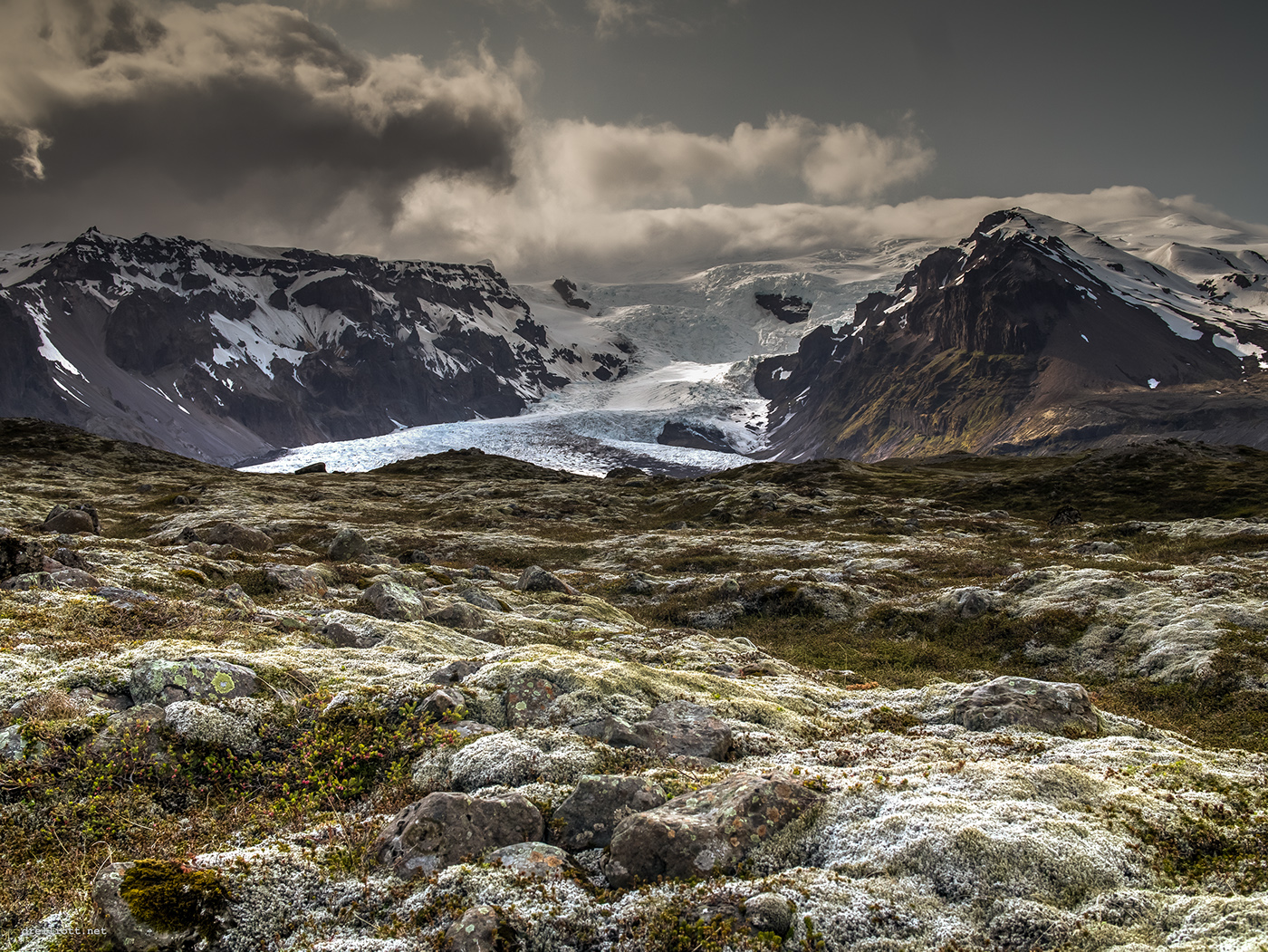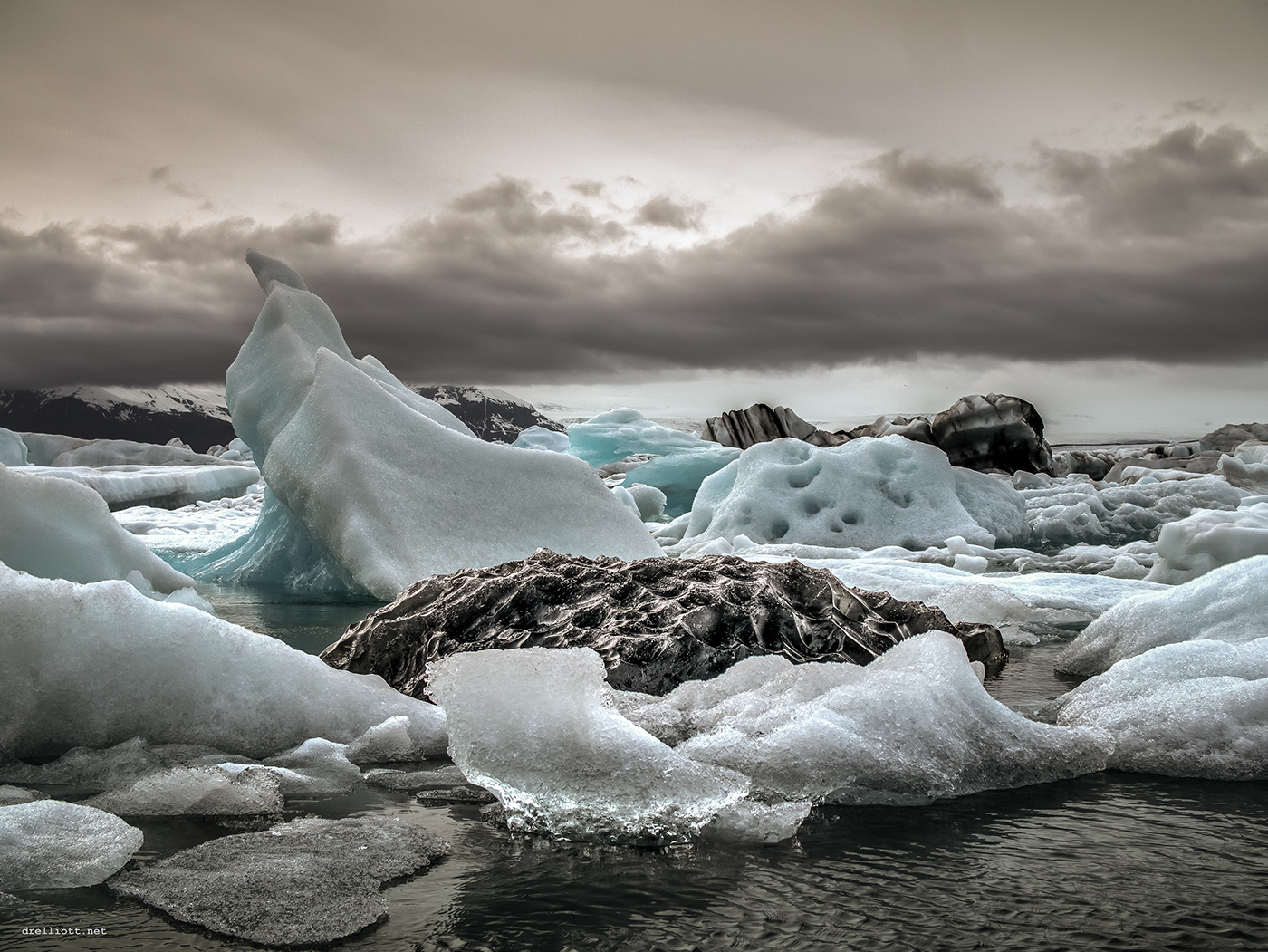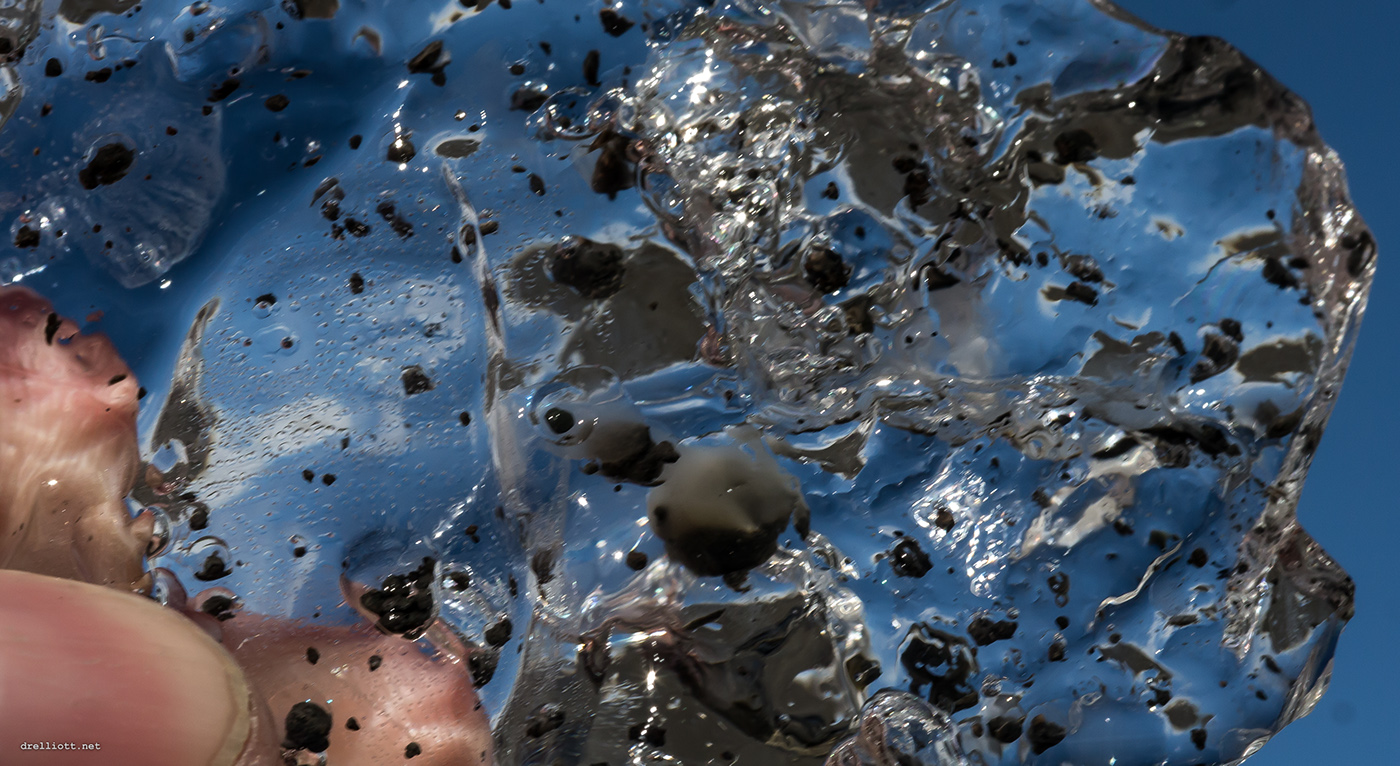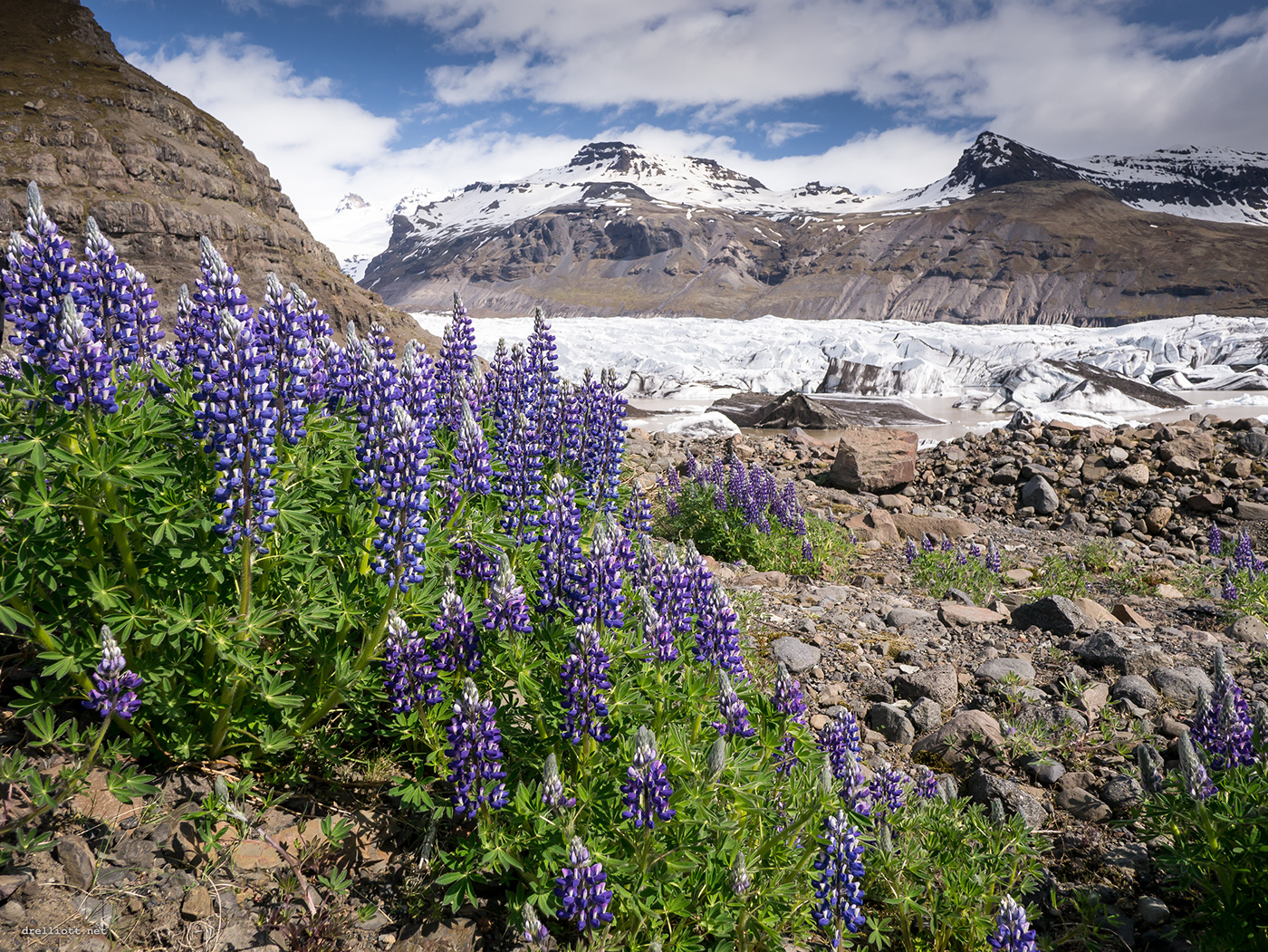This project illustrates fieldwork for a scientific research project investigating the microbial composition of glaciers in Iceland. Finding out which microbes live inside glaciers can help us work out whether or not the glacier is a living environment like the soil and oceans, or frozen life like the food in your freezer.
Ultimately we want to learn to what extent microbes in glaciers may contribute to biogeochemical cycles, which is relevant to understanding the climate and climate change.

Kvíárjökull glacier foreland showing moss and lichen typical of recently de-glaciated terrain. These "simple" organisms help prepare the way for "higher" plants to colonise, some of which also visible in this picture.

Stranded ice. Note the banding within showing that the ice is not uniform.

Debris band.Showing that the glacier is not just made of ice. Different microbes are expected to inhabit different environments within the glacier.

Glacial lagoon with a diversity of ice types calved from a glacier. Note especially the piece with holes on (not the black piece) - these are cryoconite holes which form on the glacier surface. Cryoconite holes have a distinctive microbial ecosystem of their own. In our research we have classified different ice types to see if they each have distinctive microbes living in them.

A piece of ice chipped from a glacier. Note the soil-like particles inside - we extracted DNA from this to identify the microbes living within the ice.

Looking down into the ice of skaftafellsjökull. Note not only the entrapped sediment, but also bubbles. The amount and size of bubbles, plus whether or not they are deformed helps us identify the type of ice and it's history.

We also took swabs from the glacier to allow cultivation of the microbes living there.
The photos below illustrate how freeze-thaw action breaks apart rocks after they are exposed or deposited by the receding glacier.



In addition the rocks are colonised, initially by the moss and lichen which contribute ultimately to the formation of soil. The glacier is also depositing microbes which may contribute to this process, this is something we are looking into. Lichen is actually a symbiotic association of microbes - a fungus plus a cyanobacterium or alga working in partnership.




Once the soil is sufficiently formed then larger more complex plants can move in.

Lupins colonise the barren land left by a receding glacier. Although they are considered invasive, lupins are also beneficial because they fix nitrogen which enriches the soil. In fact the nitrogen fixation process is carried out by bacteria which live in nodules of the lupin root.
Listen to the internal sounds of Svínafellsjökull glacier. This was recorded by attaching a JrF contact microphone to a climbing screw fastened into the glacier surface.
This research project was funded by Manchester Metropolitan University (MMU), UK.



